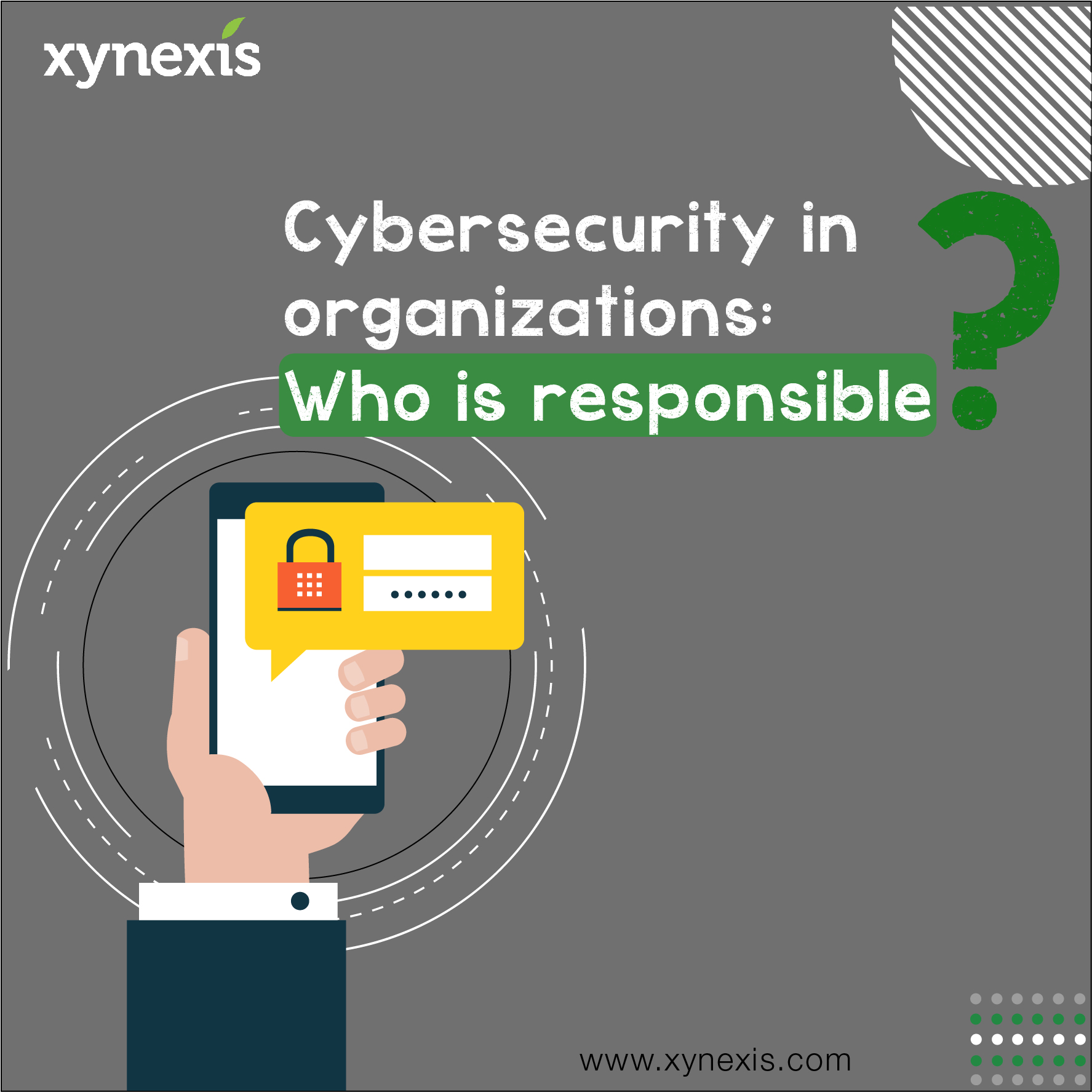Keamanan siber tanggung jawab siapa – Who’s Responsible for Cybersecurity? introduces a subject of paramount importance in the digital age. This article delves into the shared responsibilities of individuals, organizations, and governments in safeguarding cyberspace, exploring best practices, challenges, and the crucial role of international cooperation.
In today’s interconnected world, cybersecurity is not just an IT issue—it’s a shared responsibility that requires a collaborative effort from all stakeholders.
Shared Responsibility Model
In cybersecurity, the shared responsibility model recognizes that no single entity can solely bear the burden of protecting against cyber threats. This model distributes responsibility among individuals, organizations, and governments, emphasizing the collaborative nature of cybersecurity.
Responsibilities of Individuals
- Using strong passwords and multi-factor authentication.
- Keeping software and devices up-to-date with security patches.
- Being cautious about clicking links or opening attachments from unknown sources.
- Educating themselves about cybersecurity risks and best practices.
Responsibilities of Organizations
- Implementing robust cybersecurity measures, such as firewalls, intrusion detection systems, and data encryption.
- Training employees on cybersecurity awareness and best practices.
- Having a comprehensive incident response plan in place.
- Complying with industry regulations and standards.
Responsibilities of Governments
- Enacting and enforcing cybersecurity laws and regulations.
- Providing guidance and resources to individuals and organizations.
- Collaborating with other governments and international organizations on cybersecurity initiatives.
- Protecting critical infrastructure from cyber threats.
The shared responsibility model fosters collaboration and accountability among all stakeholders, ensuring a more comprehensive approach to cybersecurity.
Benefits of Shared Responsibility
- Increased awareness and understanding of cybersecurity risks.
- Improved coordination and communication among stakeholders.
- Enhanced detection and response capabilities.
- Reduced costs and resource duplication.
Challenges of Shared Responsibility
- Determining clear roles and responsibilities.
- Encouraging consistent adherence to cybersecurity best practices.
- Addressing liability and accountability in the event of a breach.
- Keeping pace with evolving cyber threats.
Despite these challenges, the shared responsibility model remains a critical framework for enhancing cybersecurity posture by leveraging the collective efforts of individuals, organizations, and governments.
Individual Responsibilities
Individual cybersecurity responsibilities are crucial in safeguarding personal data and devices in the digital age. Individuals have a significant role in protecting their online presence by adopting responsible cybersecurity practices.
Cybersecurity is a shared responsibility that requires collaboration among various stakeholders. From individuals and organizations to governments and international bodies, everyone has a role to play in safeguarding cyberspace. As former President Susilo Bambang Yudhoyono (SBY) recently represented alumni of the Indonesian Military Academy (Akabri) in extending well wishes to Prabowo Subianto for his potential leadership of the nation SBY Wakili Alumni Akabri Doakan Prabowo Subianto Sukses Pimpin Bangsa , the importance of cybersecurity remains paramount.
By fostering partnerships and promoting responsible behavior online, we can collectively enhance the resilience of our digital infrastructure and protect our sensitive information.
To enhance cybersecurity, individuals should prioritize the following:
Strong Passwords
Strong passwords are the first line of defense against unauthorized access. Avoid using easily guessable passwords such as personal information or common words. Instead, create complex passwords that include a combination of upper and lowercase letters, numbers, and special characters.
Determining the responsibility for cybersecurity is a multifaceted issue. While individuals have a role in protecting their own devices and data, the complexity of modern threats necessitates collective efforts. The protection of cybersecurity involves not only technical measures but also legal frameworks and collaboration among governments, businesses, and individuals.
Ultimately, ensuring a secure cyberspace requires a shared responsibility, where each stakeholder plays a vital role in safeguarding the digital realm.
Software Updates
Regularly updating software, including operating systems and applications, is essential. Software updates often include security patches that address vulnerabilities and protect against cyber threats. Neglecting updates can leave devices susceptible to malware and other attacks.
Phishing Awareness
Phishing scams are a common method used by cybercriminals to obtain sensitive information. Individuals should be vigilant in identifying and avoiding phishing emails or messages that appear to come from legitimate sources but aim to steal personal data.
Education and Awareness
Education and awareness play a vital role in promoting individual cybersecurity. Understanding the importance of cybersecurity and adopting responsible practices can significantly reduce the risk of cyber threats. Individuals can enhance their knowledge through online resources, workshops, and educational programs.
Organizational Responsibilities: Keamanan Siber Tanggung Jawab Siapa
Organizations have a crucial role in safeguarding their digital assets and the privacy of their customers. They are accountable for implementing robust cybersecurity measures, educating their employees about cybersecurity best practices, and managing risks effectively.
Implementing Security Measures
- Deploying firewalls, intrusion detection systems, and antivirus software to protect networks and systems from unauthorized access and malicious attacks.
- Encrypting sensitive data to prevent unauthorized disclosure or modification.
- Regularly patching software and operating systems to address vulnerabilities and prevent exploits.
Training Employees
Organizations should provide cybersecurity training to their employees to raise awareness about potential threats and best practices. This includes educating employees on:
- Recognizing and reporting phishing emails and suspicious links.
- Using strong passwords and implementing multi-factor authentication.
- Following safe browsing practices and avoiding unsecured websites.
Managing Risk
Organizations should conduct regular risk assessments to identify potential vulnerabilities and develop mitigation strategies. This involves:
- Assessing the likelihood and impact of cybersecurity threats.
- Prioritizing risks based on their severity and likelihood.
- Developing and implementing risk mitigation plans to address identified risks.
Government Responsibilities
Governments play a critical role in promoting cybersecurity by establishing regulations, providing funding, and coordinating international efforts. They are responsible for safeguarding the nation’s critical infrastructure, protecting citizens’ privacy, and ensuring the smooth functioning of the digital economy.
Regulatory Framework
Governments establish cybersecurity regulations to set standards and requirements for businesses and organizations. These regulations may include data protection laws, privacy laws, and laws governing the use of critical infrastructure. By enforcing these regulations, governments aim to prevent and mitigate cyber threats and protect citizens from malicious actors.
Funding and Support
Governments provide funding and support for cybersecurity research and development. They invest in initiatives aimed at developing new technologies and solutions to combat cyber threats. Additionally, governments may provide financial assistance to organizations affected by cyberattacks to help them recover and rebuild their systems.
International Cooperation, Keamanan siber tanggung jawab siapa
Cybersecurity threats often transcend national borders. Governments collaborate internationally to share information, coordinate efforts, and develop joint strategies to combat cybercrime and protect critical infrastructure. This cooperation is essential for effectively addressing global cybersecurity challenges.
International Cooperation

International cooperation is crucial in combating cyber threats due to the global nature of cyberspace. Nations must collaborate to share information, develop common strategies, and coordinate responses to cyberattacks.
Numerous international organizations and agreements aim to foster cybersecurity collaboration. The United Nations, through its specialized agency the International Telecommunication Union (ITU), plays a leading role in promoting global cybersecurity initiatives. The ITU’s Global Cybersecurity Agenda provides a framework for international cooperation on cybersecurity issues, including capacity building, information sharing, and policy development.
International Organizations
Several other international organizations facilitate cybersecurity cooperation. The Organization for Security and Co-operation in Europe (OSCE) established a Special Representative on Cybersecurity to address cyber threats and promote trust and cooperation among member states. The Council of Europe’s Convention on Cybercrime provides a legal framework for international cooperation in combating cybercrime.
Challenges and Opportunities
While international cooperation is essential, it also presents challenges. Differences in national laws and regulations can hinder information sharing and coordinated responses. Furthermore, geopolitical tensions and differing priorities among nations can complicate cooperation efforts.
Despite these challenges, international cooperation remains crucial for combating cyber threats. By working together, nations can leverage their collective resources and expertise to strengthen global cybersecurity defenses.
Ending Remarks

Ensuring robust cybersecurity requires a multi-faceted approach that encompasses individual vigilance, organizational preparedness, government regulations, and global collaboration. By embracing shared responsibilities and fostering a culture of cybersecurity awareness, we can create a safer and more secure digital environment for all.
Questions Often Asked
Who is ultimately responsible for cybersecurity?
Cybersecurity is a shared responsibility involving individuals, organizations, and governments.
What are some common individual cybersecurity responsibilities?
Using strong passwords, updating software, and being aware of phishing scams are crucial individual cybersecurity responsibilities.
What role do organizations play in cybersecurity?
Organizations have a responsibility to implement security measures, train employees, and manage risk to protect their systems and data.














